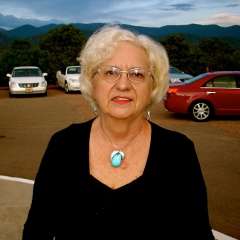Richard Strauss composed Capriccio late in life and it follows an unusual format. Originally, the composer thought Capriccio should be played with no intermission, but directors found it very long for one sitting. In Santa Fe, the two-act version of the opera opened with chamber music and director Tim Albery placed his leading characters in chairs opposite the players listening to the concert much as they would in a private home. Right from the first note, it was Leo Hussain’s translucent conducting that made Capriccio the crowning glory of the Santa Fe Opera Season.
Tobias Hoheisel’s scenery consisted of a beautifully decorated gold and white central room with French doors at the back that showed the actual setting sun as it disappeared behind the Jemez mountains. After sunset, numerous sconses provided lighting. On either side of the main room were vestibules with waiting liveried servants. Both set and costumes showed the Countess’ immense wealth and placed the time at the beginning of the 20th century.
Hoheisel’s costumes were elegant and told of the wearer’s station in society. As the Countess, Amanda Majeski first wore a muted red dress that featured a crinoline-lined skirt of varied lengths with a matching top that ended in a contoured peplum. Clairon, the actress, wore a traveling suit: white silk trousers and a jacket of natural colors that would keep chilly weather in abeyance. Most of the leading men wore muted grey-brown three-piece suits, while the servants wore gray outfits with either britches or long pants depending on their positions. For the second act, the Countess wore black and silver gray crinoline supported silk with white lace at the waist.
Which comes first, the words or the music? That is the question Strauss and his librettists, Stefan Zweig, Josef Gregor, and Clemens Krauss ask. Zweig had supplied the genesis of the libretto in the 1930s. Gregor developed it further but his work did not plase the composer, so eventually Strauss and Clemens Krauss wrote most of the final text for this 1942 opera. Each of the Countess’ guests had a self-serving answer to the question. Poet Olivier wrote a sonnet and composer Flamand set it to music. His efforts were in no way appreciated by its author. Director La Roche had the most to say, however, and we got Strauss’ opinions of various theatrical professions from the words he gave his characters. The actress flirted with the Countess’ rich brother. The prompter, who in this performance looked suspiciously like Richard Strauss himself, fell asleep in his snug little box.
As the Countess, Amanda Majeski sang her long phrases with free flowing tones that kept their focus as they blossomed out over the audience. A fabulous Strauss singer whose sound recalls German sopranos of the previous era such as Elizabeth Schwarzkopf and Irmgard Seefried, she she portrayed the noble lady as a refined heiress with consummate good taste. As the poet Olivier, baritone Joshua Hopkins made his character a bright and talented young man. As Flamand, tall lanky tenor Ben Bliss sang with a warm, light lyric voice that is beginning to be distinctive enough for easy recognition. Bass-baritone David Govertsen even made an intriguing character out of theatre director La Roche who insisted on describing his tombstone and reading its long inscription to party guests.
Star mezzo-soprano Susan Graham was every bit the great Parisian actress that Albery wanted for the part. When she was not singing, she exuded charisma and when she sang, her silken voice made each line a gem. As the Countess’ brother, tall, handsome Craig Verm produced the strong, bronzed tones of a man who is secure in his position. Allen Glassman created a thoroughly amusing cameo as Monsieur Taupe, the sleepy prompter. He made me wonder if a prompter has ever fallen asleep on the job.
The smaller parts were all well filled. Bass-baritone Adrian Smith was an officious Major-Domo. Soprano Shelley Jackson and apprentice tenor Galeano Salas sang the parts of the Italian singers with emotions I’m sure they remember from auditioning for this summer job. They were young and cute. Best of all they have luscious voices that I want to hear again. Beth Miller danced with both grace and athletic ability. I would love to see her in a full-length ballet.
Conductor Leo Hussain gave an exquisite lyrical reading of the score. More volume would have been welcome in the opening orchestral passages, but later on, a leaner instrumental sound would have helped the singers with smaller voices. Those are minor points, however, and Hussain’s translucent rendition of the score made Capriccio the crowning glory of the Santa Fe Opera Season.




